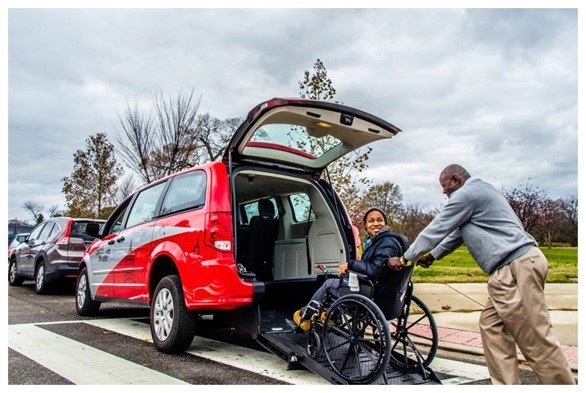
There are many ways to get around the District if you are using a wheelchair. All metro stations and buses run by the Metropolitan Washington Transit Authority (WMATA) are wheelchair accessible. In addition, WMATA offers a regional paratransit service called MetroAccess that does not have an income requirement. DFHV through taxi companies offers an alternative paratransit service to Metro Access called Transport DC.
Please find information below about how to find a WAV for your trip:

Please call the WAV Hotline at (202) 977-4WAV (4928) to connect with a taxi company with the nearest WAV. Wait times may vary.
If you have feedback on your WAV trip, please use this survey for DFHV to improve WAV service in the future: Wheelchair Accessible Vehicles (WAVs) Satisfaction Survey
The following local taxi companies provide wheelchair accessible vehicle (WAV) transportation:
Capitol Cab: (202) 398-0500
VIP: (202) 269-9000
YellowCab: (202) 544-1212
For any questions/concerns about WAV’s please contact [email protected]


